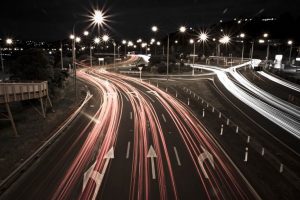The travel, transportation and hospitality sector is a big spender on the Internet of Things (IoT), spending an estimated $130 million on it last year. So what exactly are the use cases driving these investments?
Self-driving trucks: Improving fuel efficiency and safety via ‘platooning' - In April 2016, over ten ‘self-driving’ trucks arrived in Rotterdam as part of an initiative to demonstrate ‘platooning’: The movement of semi-automated trucks in a convoy. This system enables trucks to drive closer together, and respond to each other and the lead truck automatically. Manufacturers including Scania, Iveco, DAF, Daimler and Volvo claim that it will improve fuel efficiency and safety.
Connected rail systems to improve efficiency and staff safety - Cisco is working with rail operators to provide train and track monitoring systems to improve safety of both staff and passengers. Cisco has a contract with the UK’s Network Rail Telecoms to update its telecoms infrastructure and support full remote monitoring and maintenance. It also offers a rail collision avoidance system which has been commercially available for several years and is being piloted in several different countries.
Connected aircraft: Improving fuel efficiency and maintenance - Large numbers of parts of the Boeing 787 and Airbus 380 are highly connected. Individual parts send data about their state and condition, alerting ground staff to potential problems while the plane is in flight. The new part can be waiting on the ground when the plane lands for immediate replacement. This will both reduce maintenance time and make flying safer.
Improving fleet operations with real-time monitoring of fuel levels - Marzam Corporation provides services for ship owners and operators. A recent investment in two large fuel tanks has been enhanced by the addition of IoT technology allowing it to monitor fuel levels in real time and ensure that fuel is always available. Monitoring has also reduced expensive emergency refilling, and allowed it review consumption patterns.
Improving logistics at transport hubs: smart ports - The Port of Hamburg uses IoT technology to improve both management of cargo and ships through the port, and also traffic flow to and around the port. Connected systems advise drivers of likely bridge and road closures related to ship traffic and highlight alternative routes to reduce congestion. It has been able to handle larger volumes of cargo as a result.
Improving supply chain monitoring via RFID and IoT technology - RFID and IoT technology make the movement of goods more visible and enable companies to identify when perishable goods are being kept in unsuitable conditions in time to rectify the problem. Kuehne and Nagel, for example, use IoT technology particularly for their pharma business, where temperature control is crucial to product viability.
Revolutionising hotel check-in, check-out and room keys - Hilton Group now allows its customers to check in and select their room from a digital floor plan, then customise their stay by requesting upgrades, using a mobile app. Guests can also check out using the app. Hilton also expects customers to be able to use their smartphone as a hotel key in the majority of its hotel rooms by the end of this year.
Smart luggage: making lost and damaged luggage a thing of the past - BlueSmart, crowdfunded via Indiegogo, launched its new ‘connected suitcase’ at the end of 2015. It is a carry-on bag that will check its own weight and allow you to charge your phone using an integral port. You can also locate it via an inbuilt GPS function. Delsey is due to launch a similar range later this year, called Pluggage. It will have inbuilt fingerprint-linked locking and unlocking, and ability to check whether the bag is on board, and has been tampered with in transit via a smartphone app.
Concierge service for connected travellers - Planet Traveller’s Space Case 1, currently in development, will have all the same features as other smart luggage, and one extra: a personal concierge service to check flight information and hotel reservations.
Luggage trackers - A simpler solution to the lost luggage issue is a baggage tracker inside your suitcase, such as Lugloc or Trakdot. Lugloc uses a GSM network connection, to avoid poor GPS/mobile connectivity underground or in flight, and Trakdot uses GPS technology connected to a mobile app. Trakdot cannot tell you whether it is on board the plane, because the wireless technology switches off under those circumstances, but at least you can find out where your suitcase is in the world once you have landed.
Data management and analytics play a critical role in transforming IoT streams into business value. If you are part of the travel and transport community, and have a neat use case, I’d like to hear from you.
In the meantime, watch a real-world example on safer transportation and see how trucking companies use IoT to make operations safer, more efficient and economical. I can also recommend the TDWI report, Four Use Cases Show Real-World Impact of IoT, to learn how intelligent transport solutions speed up traffic flows, reduce fuel consumption, prioritize vehicle repair schedules and save lives.
Our experts will be discussing this topic further at the #saschat on Twitter on 12th August from 15hrc CEST - we look forward to seeing you there!

